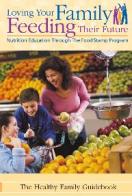I highly recommend reading a newspaper. You never know what you’ll find, and it can directly benefit you personally or inspire you to learn more and/or take action. You get more information than broadcast news provides, but it isn’t as overwhelming and chaotic as the Internet because someone selects the stories and pulls together information from various sources. It might suggest a topic for your next research paper and even get your research started.

I get the daily Janesville Gazette and scan the entire paper for stories that catch my interest (well, ok, often I skip the sports section, to which my coworkers can readily attest). On Sunday, Sept. 23rd, I read Anna Marie Lux’s Between the Lines column with the title “Eating on $3 a Day.” Now that caught my eye. You can read it too–go to the newspapers on the Library’s first floor. Her column appeared on the first page of section B.
Could you feed yourself on $3 per day (without cheating)? Would your diet be healthy? Why would anyone have to do that?!
Ms. Lux took the FoodShare Challenge, which is eating for a week without spending more than $21, the average weekly food stamp (aka “FoodShare”) award per person. The column includes her shopping list (total spent: $20.64), descriptions of the meals she ate, her admission that she got very tired of the same meals all week, and oh yes–lots of information that could be used in a paper, including quotes from individuals interviewed and information from organizations that could also be contacted or found online for more information.
Reading the column was a mini-education on this topic with an emphasis on local impact: Food stamps are not actually intended to be the sole source of anyone’s food budget, even though that is sometimes the case. About 13% of the Rock County population received food stamps in 2006 (8th out of the 72 Wisconsin counties), but statewide only 60% of eligible families receive this assistance, many waiting until they are utterly desperate because of the stigma. Research on Wisconsin counties shows that Rock County is the 10th highest in terms of the wages needed to meet basic needs ($17.39 per hour for a single mother with two young children). To help recipients manage they receive education about providing good nutrition with “few choices” and shopping for lowest prices, and there are food pantries and school meal programs to help out as well. The article also refers to web sites for additional information:
- Wisconsin Food Security Consortium (more information on the FoodShare Challenge here)
- Wisconsin Food Security Project (UW-Extension and the Wisconsin Dept. of Health & Family Services)
- The Self-Sufficiency Standard for Wisconsin (Wisconsin Womens Network)

For those who want to know more, the University Library would have additional information through its databases, collections, and Internet access. For example, the Library just received the Staff Support Kit (Federal Documents A 98.8:F 21/2/Span./Eng./Kit) for the Food Stamp Program, which includes educational materials for trainers and workshop attendees on how to make good meals (the food pyramid explained) with few ingredients (sample recipes included). The participant booklet also refers to the Eat Smart Play Hard website from the USDA for more recipes. That site provides a lot of information, including the recipefinder database. You can search for an ingredient and get possible recipes that use it. You can also rate a recipe and add your own. The FNS Supplemental Nutrition Assistance (aka Food Stamp) Program’s home page would provide a wealth of information for a research paper, including statistics, rules and policies governing the program, and a history of the program. A search of the Library’s catalog would find sources such as a 2007 Wisconsin Legislative Fiscal Bureau report on FoodShare Wisconsin (the Bureau provides program information and analysis for the State Legislature) and a 2001 book The New World of Welfare that talks about supporting work through Medicaid and food stamps. Searching the Academic Search Premier database for journal articles on food stamps would find, among many other articles, a gem in the Sept. 2007 issue of the Journal of the American Dietetic Association called “The Challenge with Food Stamps” that reports that several national legislators took the $21 per week challenge and have since begun calling for changes. That, in turn, might lead you to newspaper articles or the blogs of those legislators for their comments on the experience (see, for example, Congressman Tim Ryan’s blog – apparently the airport security confiscated 4-5 of his meals for the week!) .
So…read a newspaper! Learn things you aren’t looking for. What you will learn, what will demand that you learn more, may surprise you.

The University Library is a federal depository with many federal, state, local, and international documents on a variety of current and relevant issues available to you in print, microfiche, CD-ROM, and online. Come check out your government at the University Library!

Very Interesting! I would suggest everyone try the $3.00 a day challenge.